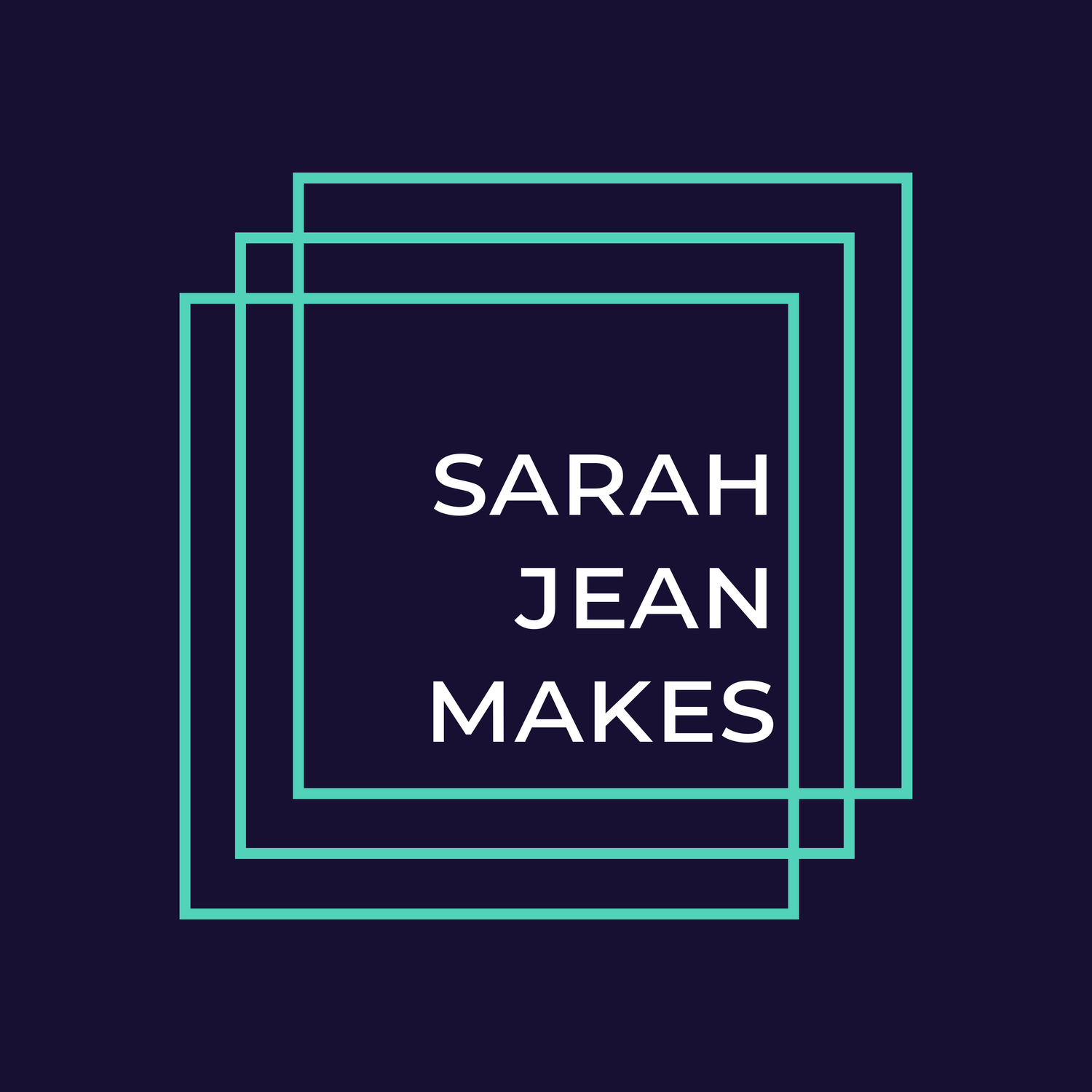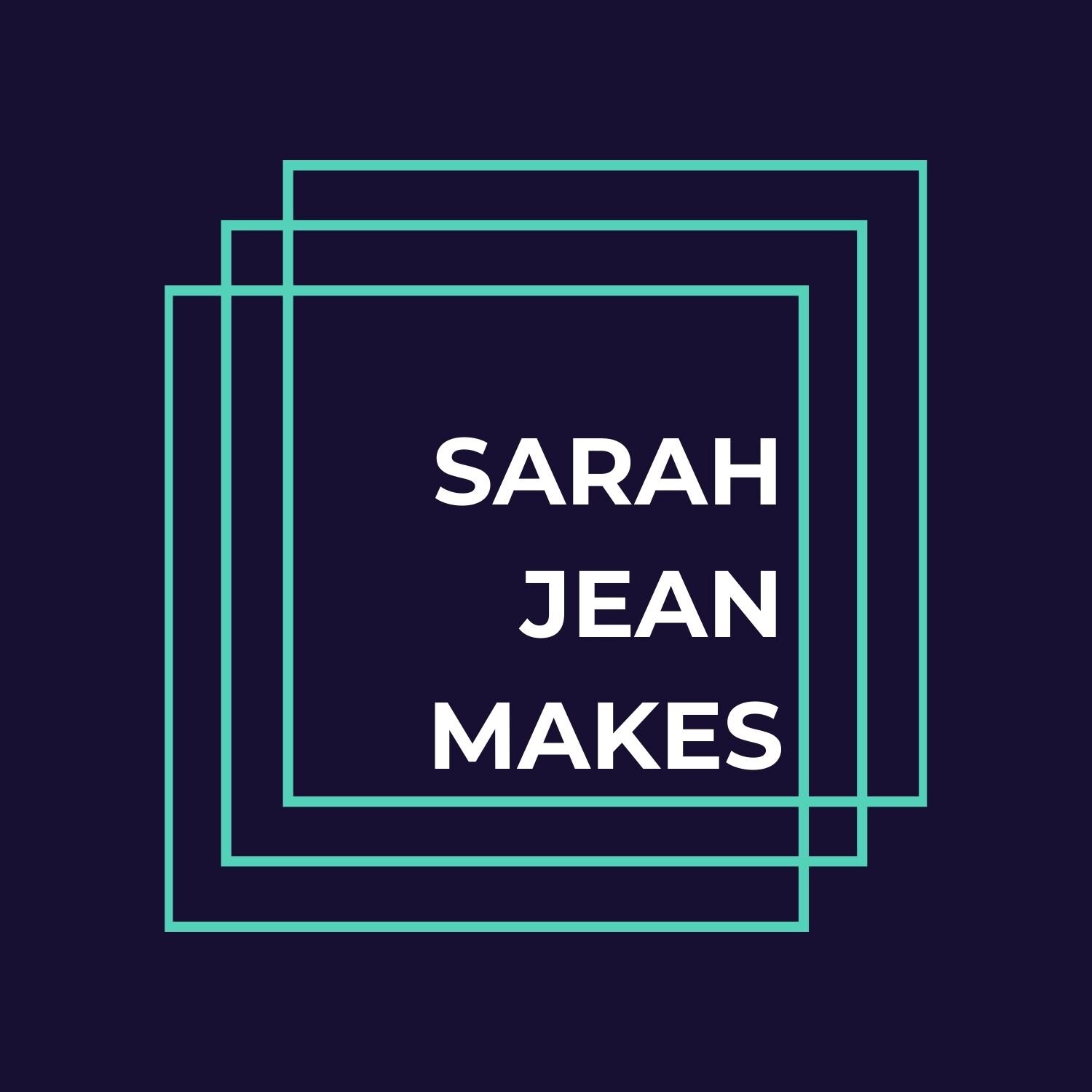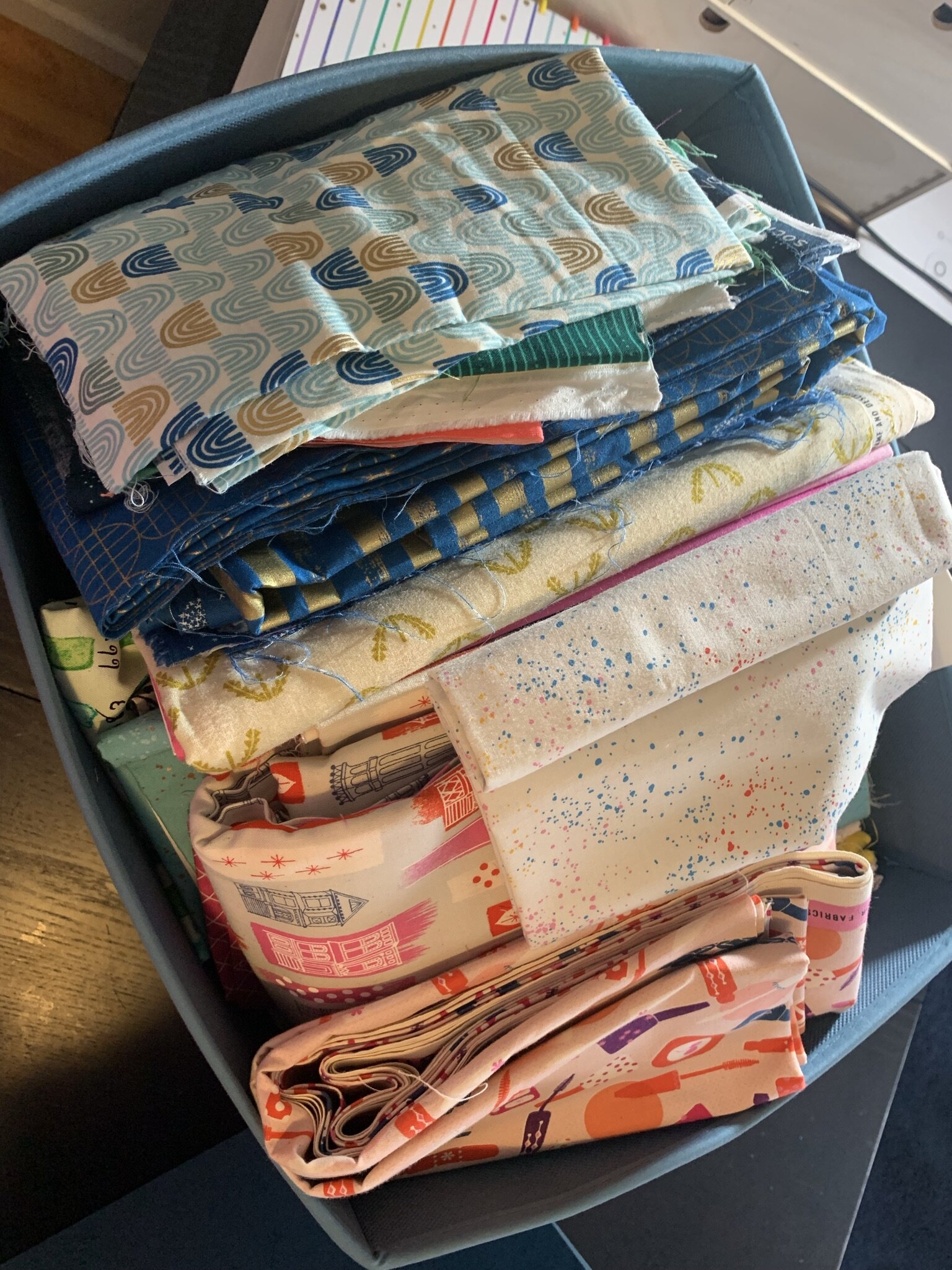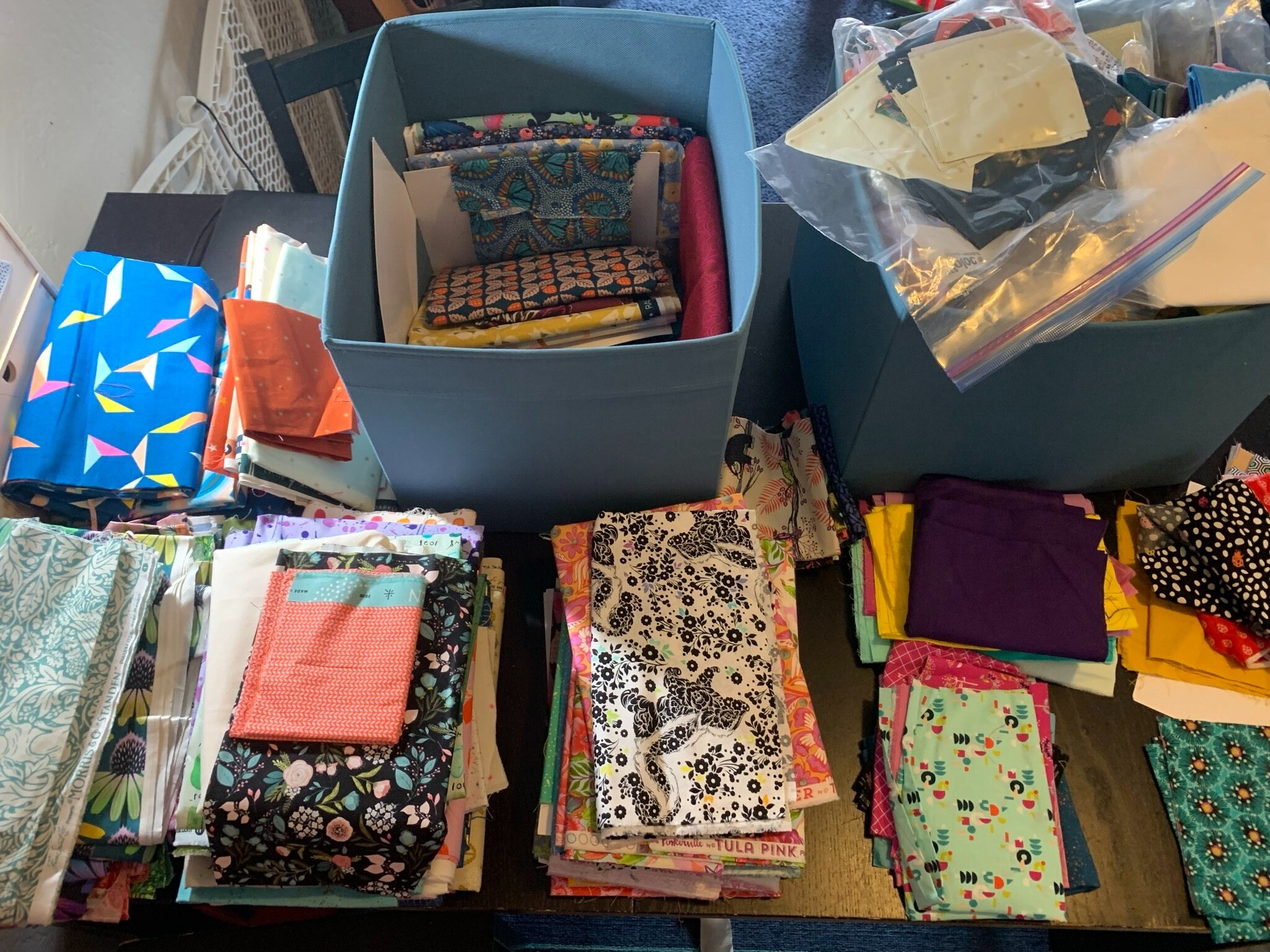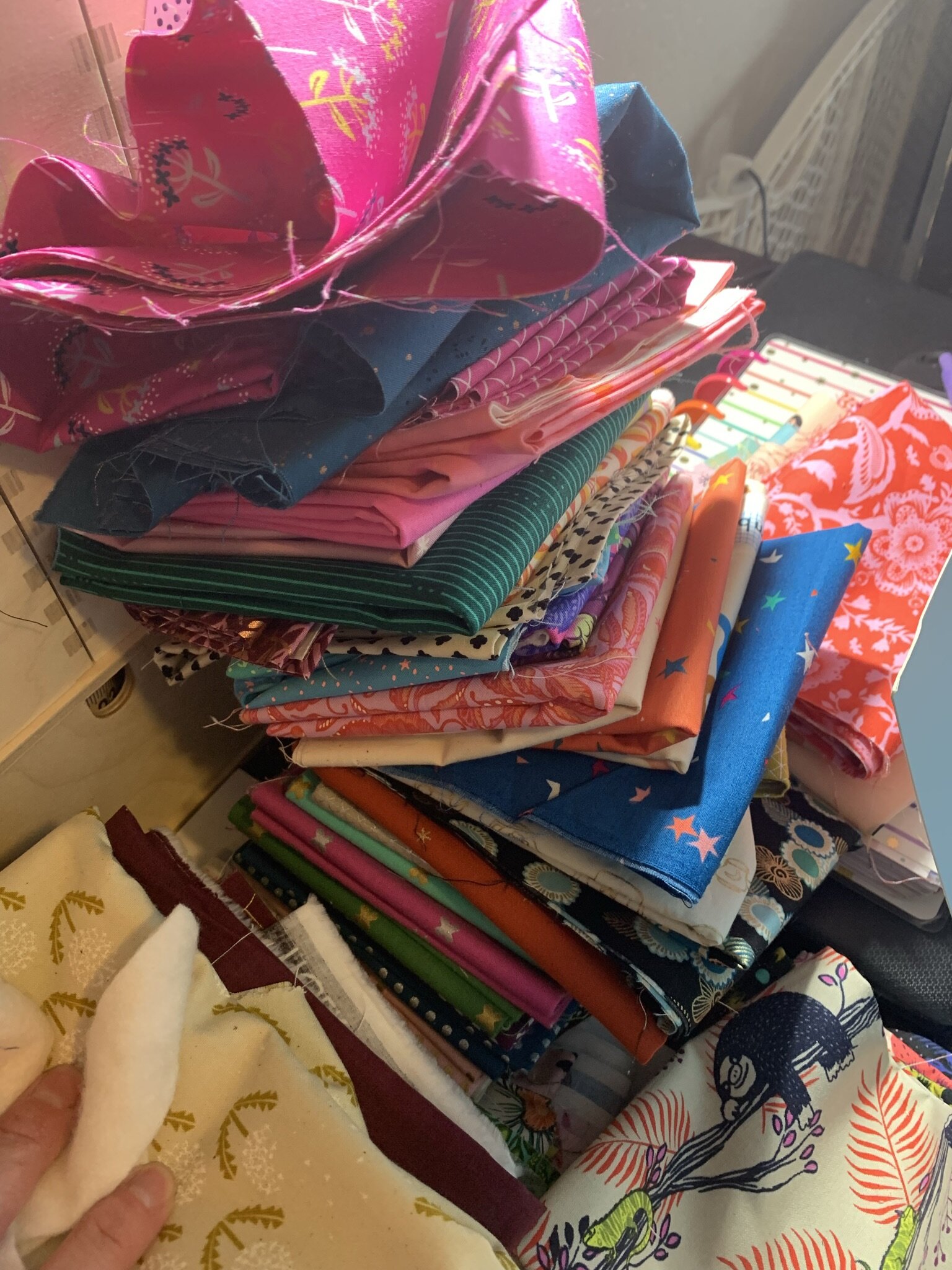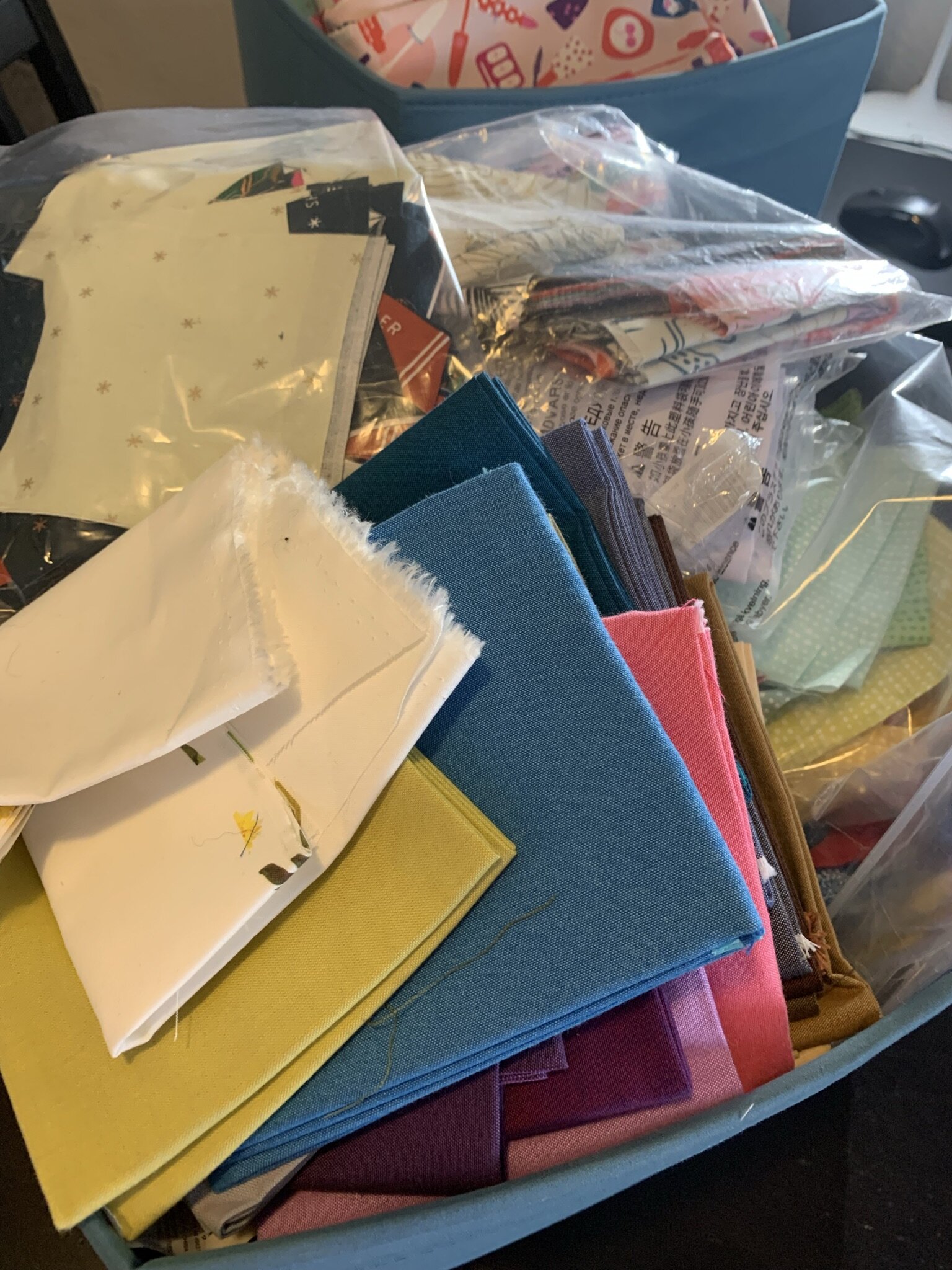How to Curate a Quilter’s Fabric Stash
Thoughts by one highly opinionated person with very specific needs, preferences, and goals.
Take what you wish and leave what you don’t!
We’ve all heard the saying: “Quilting and buying fabric are two separate hobbies!” While this is very true, it’s easy to fall into the trap of collecting prized pretties and never using them. I have been engaging in a bit of “emotional fabrication” aka buying all the fabric I HAVE TO HAVE NOW when I’m feeling sad, stressed, happy, bored, or angry. Needless to say, my stash is bursting at the seams. After giving it some very serious thought, I’ve generated some personal guide rules to stash building and stash storing to keep myself on track and accountable as I move forward. Hopefully you’ll be able to gain some useful tips to implement within your own fabric stashing!
Pictured here are my bins of fabric I have stored in my fabric cabinet - the inspiration for this whole post! As you can see, there’s a whole lot going on!
Know your style.
When I first started sewing, I would grab any and everything I could (I’m looking at you, Joann remnant section). I didn’t pay much attention to type of fabric, directionality, scale of print - I only bought what was cheap and what was cute. I have evolved from that - now following shops and manufacturers that align with my own personal visions and values and are stylistically in line with what I find to be beautiful and refreshing.
A couple years ago I made the decision to stop decorating my home with what I thought I should have, but actually fill it with art that makes me feel something. I started shopping small, seeking local artists (and family artists!) to decorate my space. I’m taking this same approach with fabric selection. What would I enjoy seeing in my home? What would make me happy to look at on a daily basis? If it passes that test, it can be included in my stash.
I’ve come to recognize that my style is modern, playful, bold, and bright. I gravitate toward what is silly and fun: Bright colors, clean lines, and a hint of irony. That’s me in a nutshell.
2. Consider compatibility.
It’s incredibly easy to just buy with wild abandon. If you have the space and finances, I’m inclined to tell you to go for it. However, not all of us are so lucky! I live in a small home in the city of San Francisco and am confined to a small storage cabinet to hold all of my fabrics, so being selective is key. I’ve found that over time I have amassed a lot of fabrics do not work well together. I bought for nostalgia. I bought for rarity. I bought for newness. I bought because OMG IT HAS UNICORNS! This does not make for a very cohesive stash. Consider what colors / tones and styles you gravitate toward.
Do you love bright and bold colors? Do you lean toward earthy and natural aesthetics?
Do you lean traditional or modern?
Do you prefer black/grey/white neutrals or brown/tan/beige neutrals?
Do you like big prints or are small prints more your jam?
What themes are your preference? Geometric, florals, animals, or batiks? Cutesy and sweet? Boho and chic? Clean and simple?
All of these considerations (and more!) will help guide you in making your selections. Keeping in the same stylistic themes will help ensure that your stash is compatible in more ways than just color.
Lately I’ve been drawn to geometric designs with bright and vibrant colors. These fabrics pictured here were were bundled together for a Lands End Quilt. I did make some changes to the final color palette, removing the dark green fabric and substituting in a more bright blue. I found that it just didn’t flow well with the other vibrant hues and 'I’m glad I trusted my instincts.
3. YOU NEED MORE SOLIDS AND BLENDERS THAN YOU REALIZE!
This is a hard truth to accept (cough cough, looking at you, Sarah), but it’s true. When it comes to pulling from your stash for projects, it’s a lot easier to combine prints with solids or blenders rather than prints on prints on prints (unless that’s your jam, then go for it, friend!). Stocking up on your favorite solids brand (Kona, Bella Solids, Art Gallery, just to name a few) in colors and tones that reflect your preferences and style will make it a lot easier to coordinate projects.
It’s also wise to seek out blenders that have texture to them. This can come from low volume prints or very small prints. I have a heavy preference for some texture in a blender fabric, as it gives just a bit of elevation to a project. My favorites right now are Ruby Star Society Speckled fabrics and Ruby Star Society Spark fabrics. Every fabric manufacturer carries a low volume, blender collection. Find what resonates with you and build from there!
These fabrics were used in a commissioned quilt. I used primarily these Speckled fabrics as a blender, with the low volume wings to coordinate as a feature fabric. The floral was used as backing fabric and I love that they all came together to give just enough visual interest without being overwhelming. Had I used more patterns, the quilt would have become overly busy and distracted from the essence of the design.
4. Yardage > FQs or 1/4 yard cuts.
After much intensive research (meaning, spending hours looking through destash pages and buying random FQs or 1/4 yard cuts), I have made the firm stance that buying yardage is much more practical in building a stash. Buying small cuts is really fun and can be a great way to try out a fabric you like, but in actuality you end up with a random assortment of cuts that are really tricky to bring together in a way that is cohesive. This may be my propensity for non-scrappy quilts speaking, but sometimes certain fabrics just aren’t meant to go together. Buying in larger quantities - if you’re able to do so - can help bring flexibility to your stash. You can easily swap in various fabrics to a quilt pattern if you have enough excess to work with. Feeling pushed into using a fabric because it’s the only 3/4 yard cut you have can be frustrating. So if you’re able to do so, buy yardage of a favorite print over a small cut.
I bought these fabric for a pattern that I am testing and I found a deep discount on them. I chose to buy a yard over what I needed so that I can use the excess in my stash. They check all the boxes for me style wise, so I’m happy to add more of them into my collection!
5. Pre-cuts are cool, to an extent.
Honest disclosure: I’m incredibly guilty of buying random Charm Packs (5” squares) and Layer Cakes (10” squares). Sometimes when I see new collections come out, but I don’t have the budget to buy yardage, I often will grab small bundles to scratch the itch of having something new. It’s a smart move budget wise, but doesn’t always result in being useful. I would recommend being selective with how many small pre-cuts you collect and honestly consider how many you would reasonably need for a project at any given time. A baby quilt could easily get away with one Charm Pack plus a yard of background fabric. However, it’s incredibly tricky to build out a throw sized quilt with one Charm Pack and a lot of mismatched / non-coordinating yardage. So think wisely and strategically about your intentions and the usability of the pre-cuts.
One caveat to this would be quilt shop curated bundles. I’ve seen some amazing curated bundles from shops that are perfect for stash building and can easily be used for a project. The fabric bundles can be associated with a pattern that has recently launched and come in pre-determined sizes or they can be simply gathered because they work well together. Either way, a curated bundle is a good starting ground for building out a quilting fabric stash.
Here’s a little bit of my pre-cut impulse buys. While I have been able to buy multiples of select collections, which will increase my probability of using the fabrics, some are just single packs. This makes it really tricky to go from fabric stash to use in a project, as I would need to supplement extensively. Since a lot of fabric collections already have blenders and low volume prints in them, I would have to be more strategic about what I choose to include into these to help it remain cohesive.
